What is Laparoscopic Hysterectomy?
Hysterectomy is the surgical removal of all or part of the uterus. There are many reasons for removal of the uterus. These include cancer (of the uterus, cervix, ovaries), fibroids, endometriosis, heavy and prolonged menses and prolapse of the uterus. Traditionally, hysterectomy is performed either via an open surgery (laparotomy) or via the vagina (Vaginal Hysterectomy). In Laparoscopic Hysterectomy, the surgery is performed with the assistance of a laparoscope and with two or three other small incisions. The technique of how Laparoscopy is performed is described in Chapter 4.
What are types of Laparoscopic Hysterectomy?
There are several types of laparoscopic hysterectomy that can be performed. They are:
1) Total laparoscopic hysterectomy
In this technique, the whole procedure is performed laparoscopically.
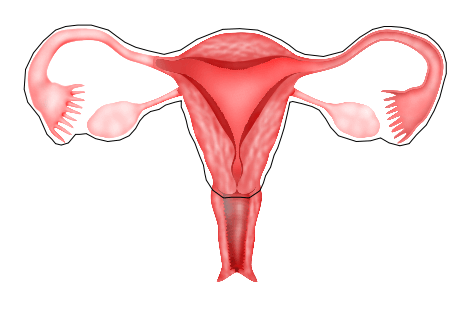
2) Laparoscopic Assisted Vaginal Hysterectomy
In this technique, parts of the surgery are performed laparoscopically while others are performed vaginally, like in a Vaginal Hysterectomy. This is a much easier surgery to perform especially by surgeons who, may have not yet acquired advanced surgical skills such as laparoscopic suturing.
3) Laparoscopic Subtotal Hysterectomy
In this technique, the body of the uterus is removed, but the cervix is retained. Some surgeons believe that retaining the cervix will retain the pelvic support thus reducing the incidence of future prolapse. Retaining the cervix is also believed to retain normal sexual function. However, the disadvantage of leaving the cervix behind is the worry that diseases of the cervix such as cancer of the cervix may occur in the future. Diseases such as endometriosis and fibroid may grow from the cervix as well.
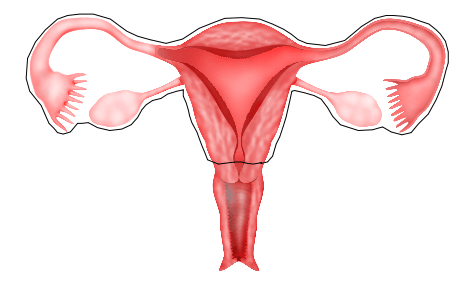
4) Single Incision Laparoscopic Hysterectomy
In this technique, the surgery is performed via just one incision of about 2.5 cm in the umbilicus. All the procedures in performing the hysterectomy (as described below) are done through this incision. It is a more skillful surgery and is described in detail in Chapter 19.

How is Laparoscopic Hysterectomy performed?
The technique of how laparoscopic surgery is performed is described in chapter 15. In hysterectomy, the round ligaments are first coagulated (using an electric current to stop any bleeding of tissue) and then cut. The peritoneum overlying the cervix is then cut and the bladder is pushed downwards away from the cervix. If the ovaries are to be removed, the ligament containing the blood supply to the ovaries (infundibulopelvic ligaments) are coagulated and cut. If the ovaries are to be preserved, then the ligament connecting the ovary to the uterus (ovarian ligament) is coagulated and cut. The fallopian tubes are also coagulated and cut and the ovaries are detached from the uterus. The broad ligament (the membranous structure attaching the ovaries to the pelvis) is released. The ascending branches of the uterine arteries are sutured, coagulated and cut. An incision is then made on the vagina and this incision is then extended around the vagina to detach the vagina from the cervix. The uterus is then detached and removed from the pelvis via the vagina. The vaginal vault is then sutured with absorbable sutures.

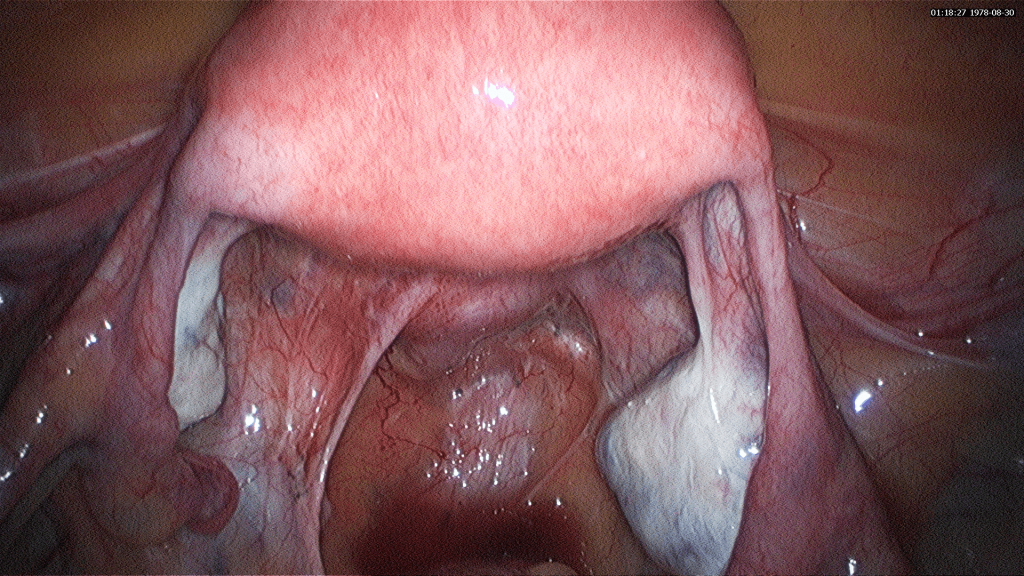
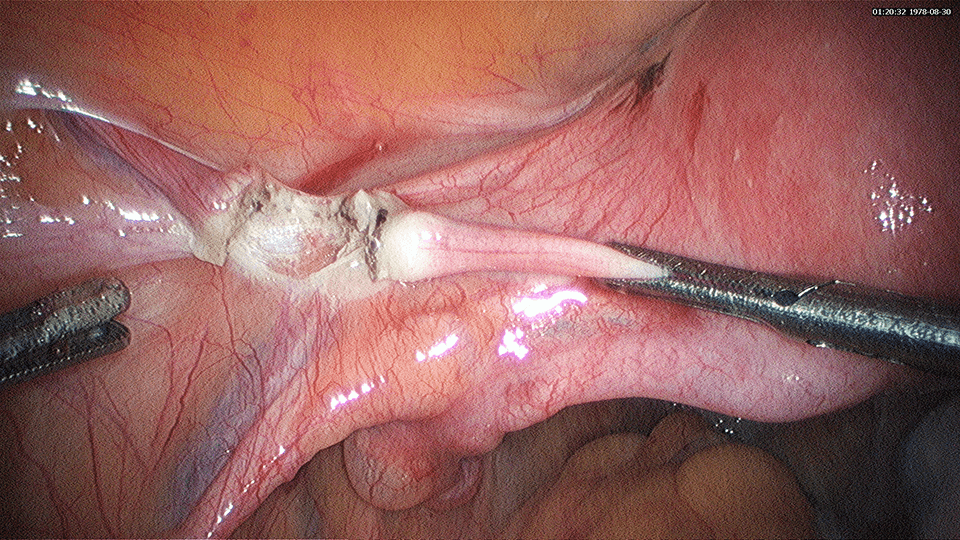
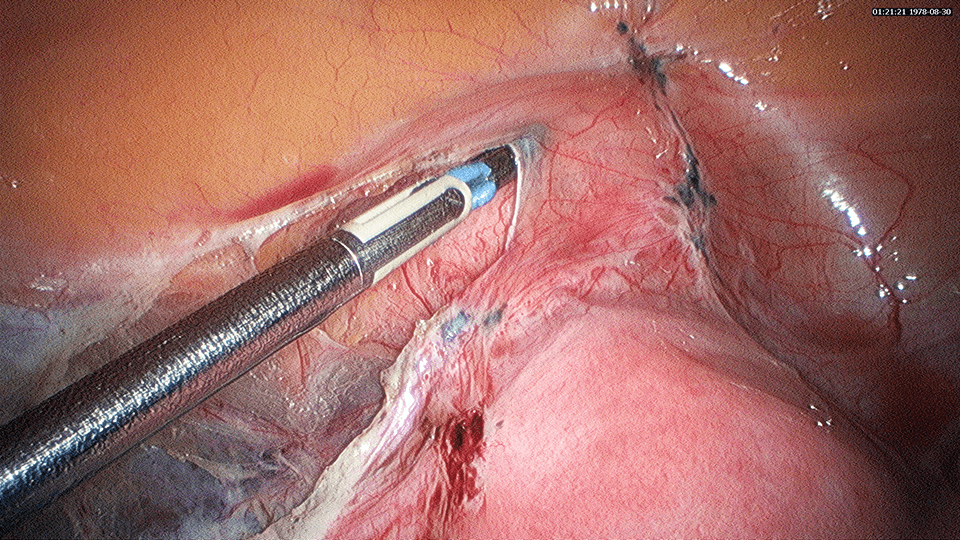
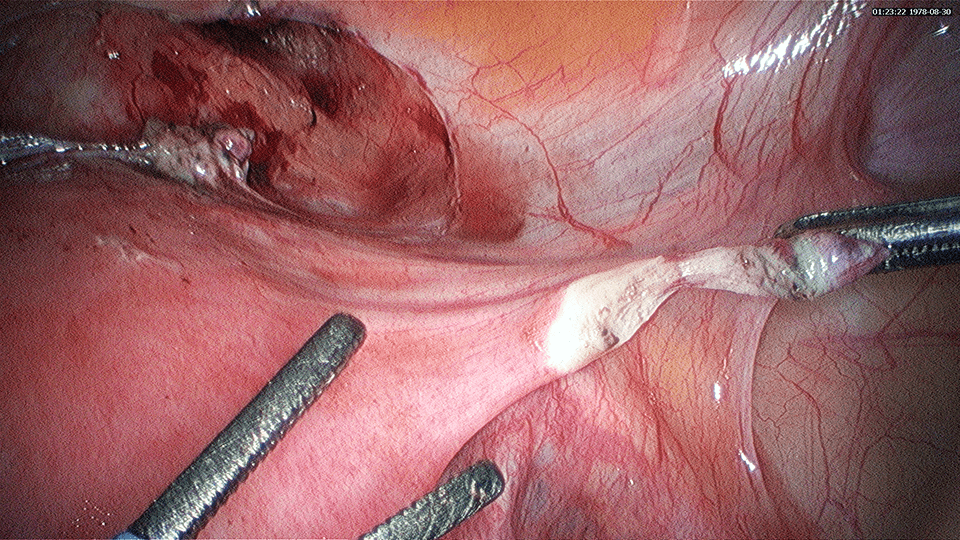
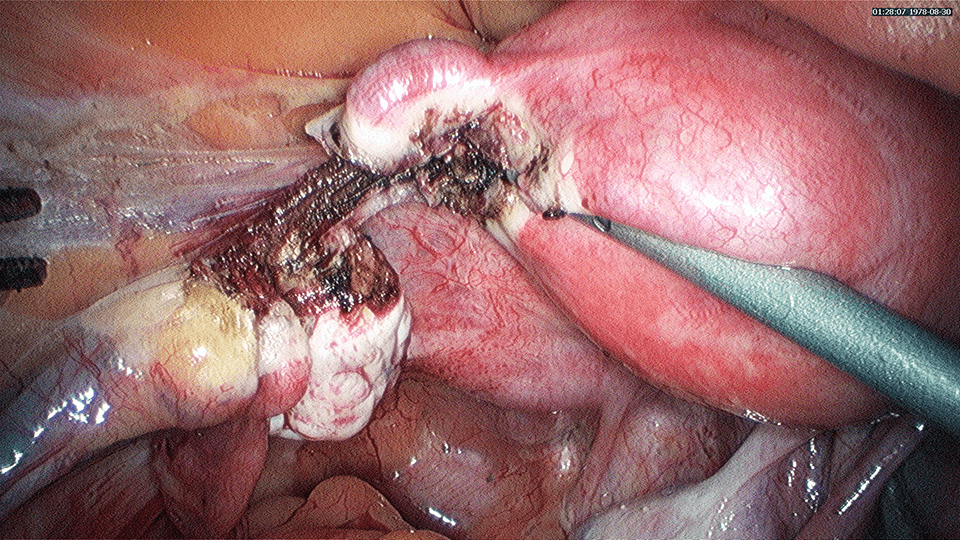
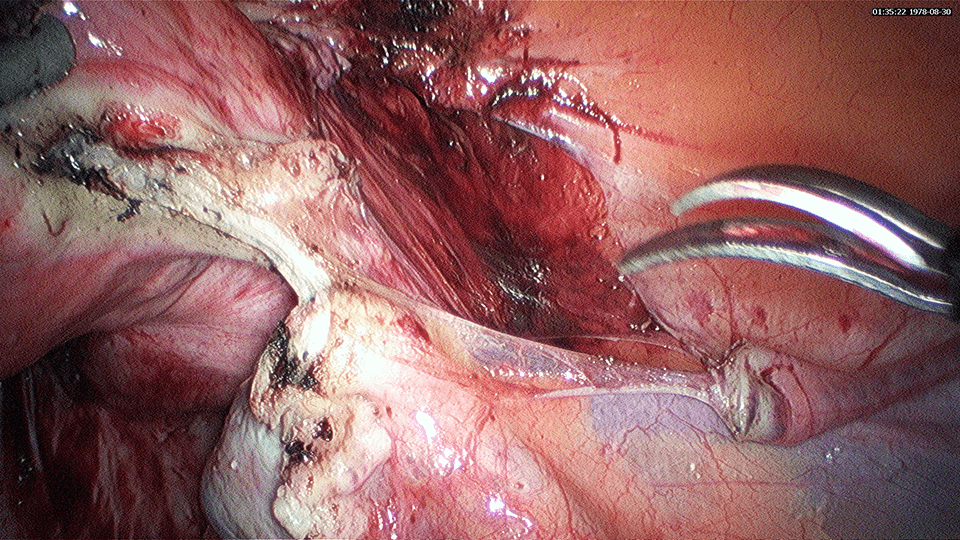
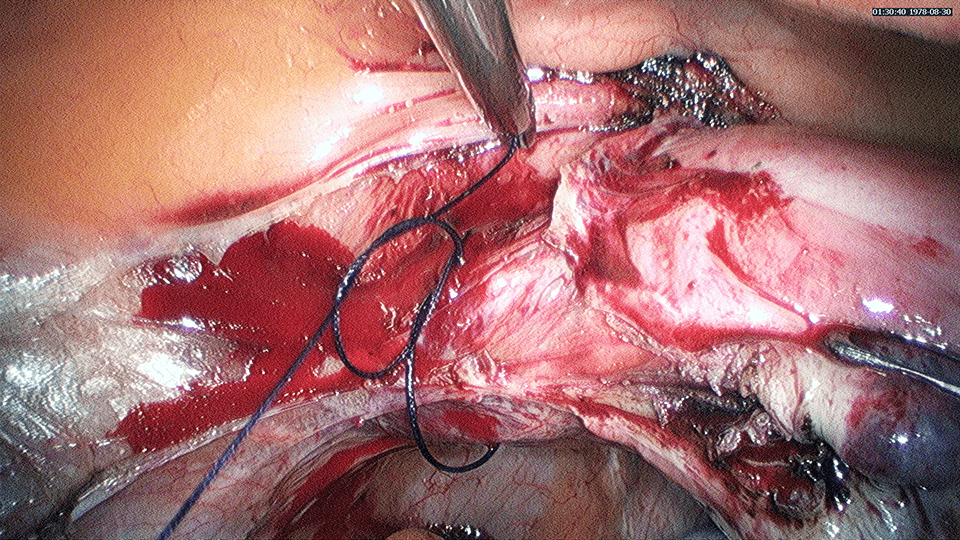
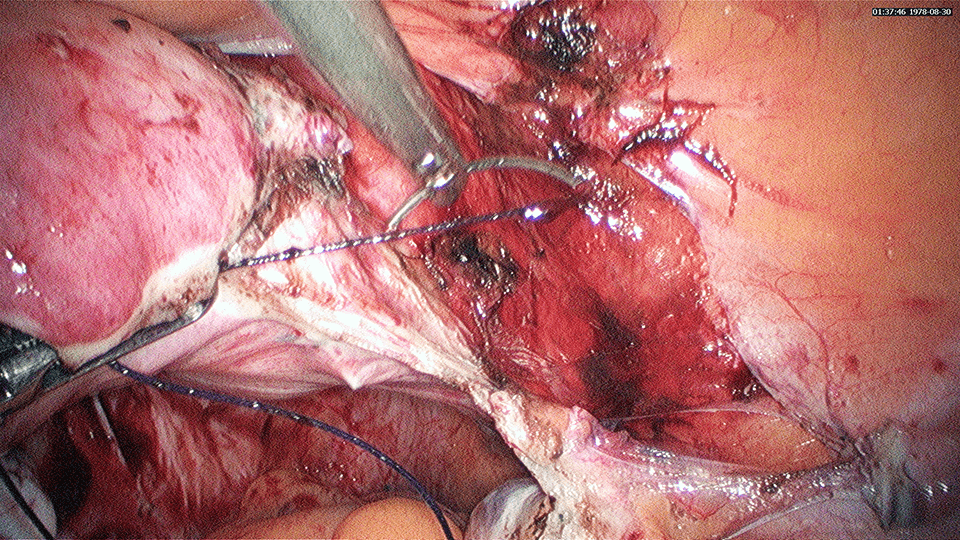
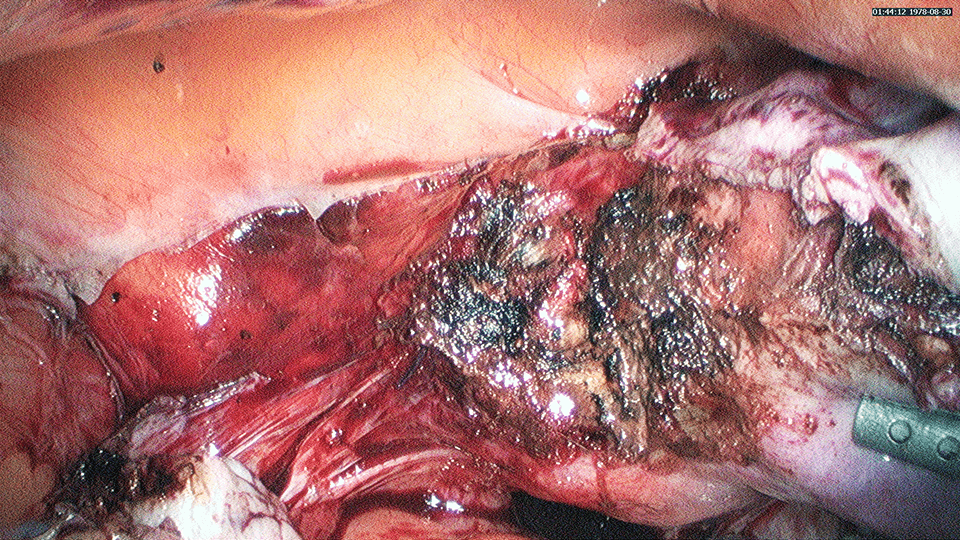
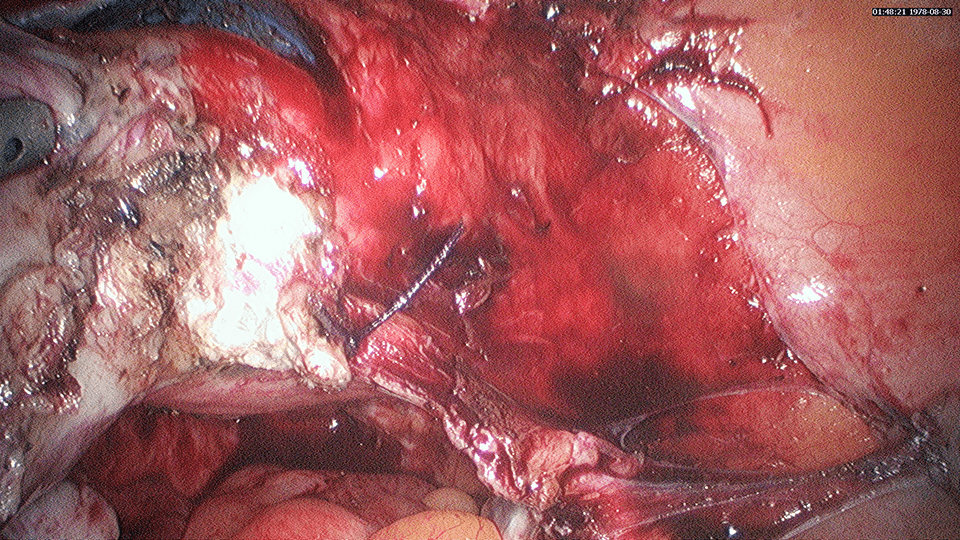
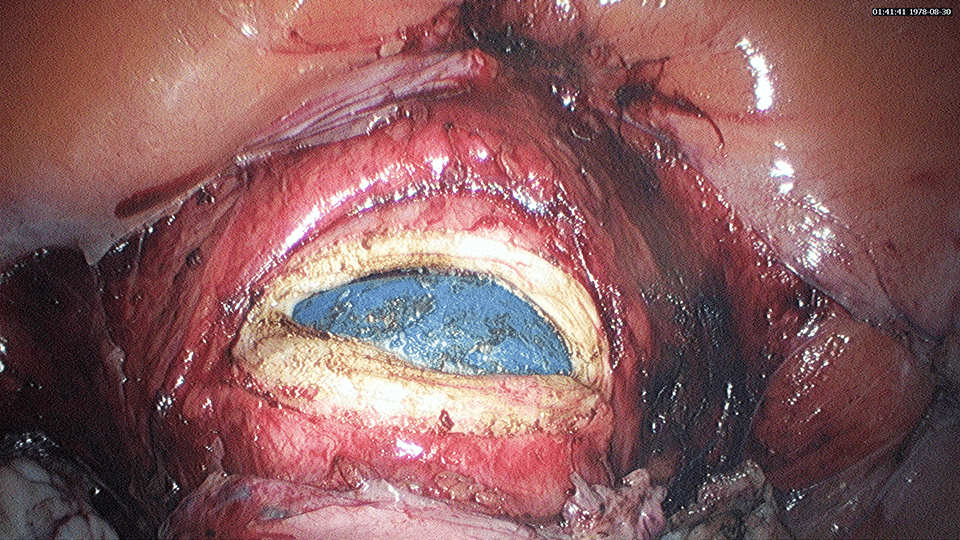
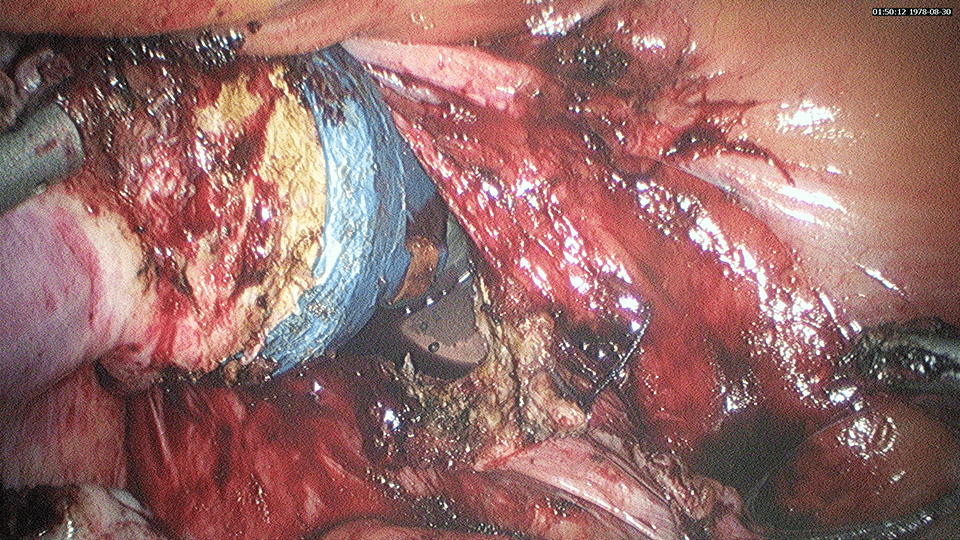
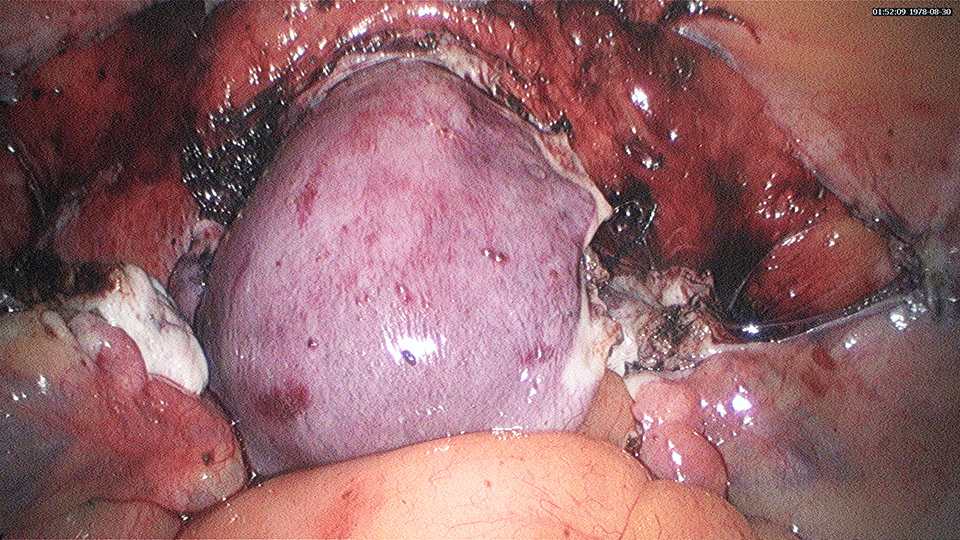
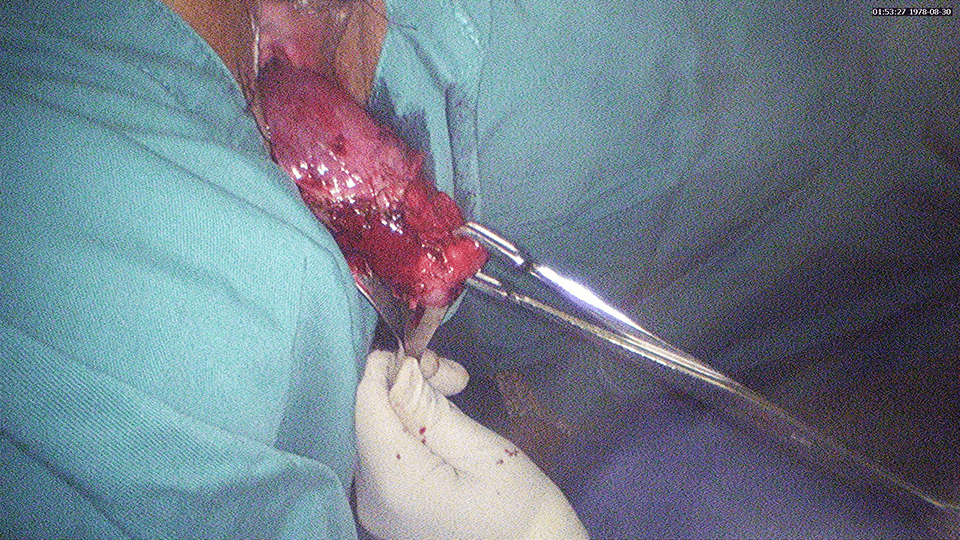
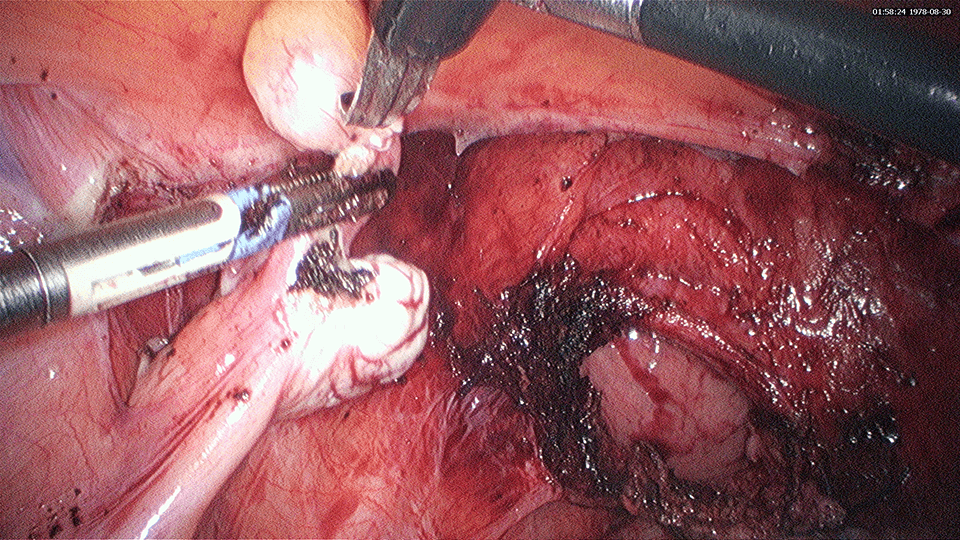
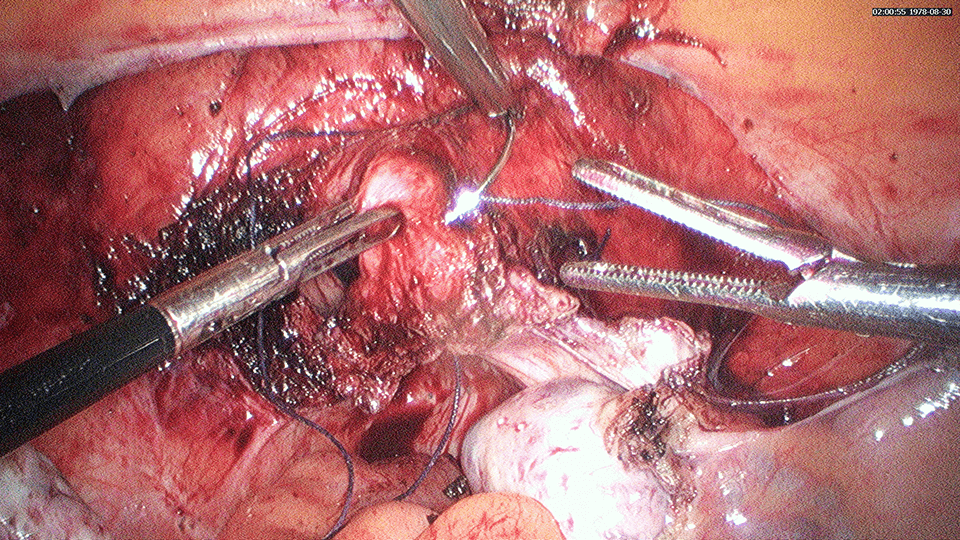
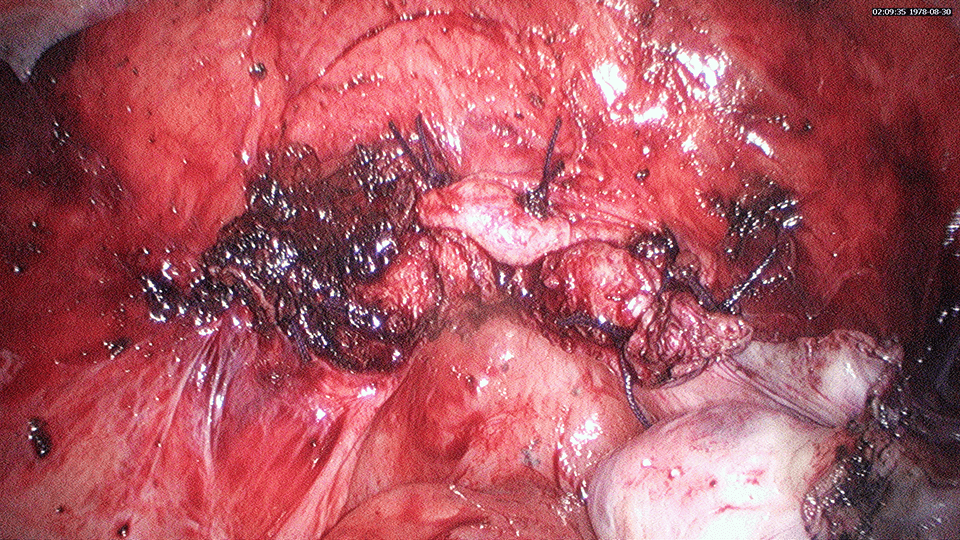
What are the advantages of Laparoscopic Hysterectomy?
The advantages of laparoscopic surgery are the same as the advantages described in chapter 15.
What are the dangers of Laparoscopic Hysterectomy?
Laparoscopic Hysterectomy involves the detachment of the uterus from the pelvis. There are certain important structures that are nearby or attached to the uterus that may be accidentally injured during the surgery. These structures include the ureters, bladder and the bowel. If injury is recognized during the surgery, repair can be done. The injury is sometimes only noted after the surgery and a second surgery may be necessary to repair the injured structure such as a ureter.
The Bladder is located in front of (anterior to) the uterus and cervix. Due to diseases such as endometriosis or a previous Caesarean section, the bladder sometimes may be adherent to the uterus. In such situations, injury to the bladder may occur. Repair of the bladder may be necessary either laparoscopically or by a laparotomy.
In diseases such as endometriosis, the bowel may be densely adherent (g) to the uterus, posteriorly. The bowel (rectum and sigmoid) may have to be released from the uterus and cervix before the hysterectomy can be performed. Accidental injury to the bowel may occur and the bowel will have to be repaired. If detected during surgery, the repair may be performed at the same time. However, if the injury is detected postoperatively then a second surgery may be necessary.
Again, the more experienced and skillful the surgeon is, the lesser the chances of developing complications.
Who are the candidates not suitable for Laparoscopic Hysterectomy?
Not all women can benefit from a hysterectomy performed laparoscopically. The ability to perform a laparoscopic hysterectomy will depend on the skill of the surgeon. The more skillful the surgeon, the better his performance in complex laparoscopic cases, laparoscopically. It may be difficult to perform a surgery laparoscopically, in the following situations:
1) Large uterus
A uterus may be enlarged because of fibroids or adenomyosis. When the uterus is large, there may be less space for the surgeon to perform a Laparoscopic Hysterectomy. It may be difficult for a surgeon to visualize all the structures via a laparoscope. Sometimes, a GnRH (g) analogue injection may be given to shrink the fibroid before performing Laparoscopic Hysterectomy.
2) Multiple previous surgeries
Women who have undergone previous multiple open surgeries may have scar tissue (g) (adhesions) formed in the abdomen. These adhesions may cause the bowel to be adherent to each other and the uterus and the abdominal wall. It may be difficult to release these adhesions laparoscopically. Previous open surgeries are not an absolute contraindication for laparoscopic surgery. A skillful surgeon can place a laparoscope in the abdomen to see whether there are adhesions before deciding whether to proceed with the surgery laparoscopically or to convert to a laparotomy. Not all patients who have undergone previous surgeries may have scar tissue in the abdomen.
3) Severe adhesions as a result of endometriosis
Some patients with severe endometriosis may have severe adhesions of the uterus, ovaries and fallopian tubes to the pelvis. In such situations, the surgeon must be very skillful in dissecting away the adherent structures (ureters, bowel or bladder) from the uterus and pelvis before proceeding with the hysterectomy. Injury to these structures may require repair, which is easier to be performed by open surgery then by laparoscopy.
Fact 33.1 Should the ovaries be removed during hysterectomy?
Removal of both ovaries will lead to immediate menopause. Removal of one ovary and retaining the other will not lead to menopause. Women with diseases of the ovaries such as ovarian cyst, ovarian cancer, endometriosis and so on may need one or both ovaries to be removed. In women who do not have any disease of the ovaries, removal of the ovaries is not recommended. In women who are postmenopausal, removal of both the ovaries is controversial. There have been studies suggesting that ovaries produce some useful hormones even in postmenopausal women. . The disadvantage of not removing both the ovaries from a postmenopausal woman is the risk of developing cysts or even ovarian cancer. This risk is very small. That is why it is essential for women who retain one or both ovaries after a hysterectomy to undergo regular transvaginal ultrasound to ensure that there are no cysts in the ovaries.
Fact 33.2 What is the difference between subtotal hysterectomy and total hysterectomy?
In subtotal hysterectomy, only the body of the uterus is removed and the cervix is retained. In total laparoscopic hysterectomy, the body of the uterus and the cervix are removed. Some believe that by retaining the cervix, the pelvic floor structure is intact and so there is a lesser chance of prolapse. There is also a suggestion that if the cervix is retained, sexual function will be better compared to if the cervix is removed. It is important to note that if the cervix is not removed, regular pap smears are a must. Some women may have monthly menstrual spotting from the cervix. There is a small risk of developing diseases such as fibroid and adenomyosis from the cervix.
Summary
Removal of the uterus (hysterectomy) can be performed via the laparoscopic route. The different types of laparoscopic hysterectomy are total laparoscopic hysterectomy, subtotal hysterectomy, laparoscopic assisted vaginal hysterectomy and single incision laparoscopic hysterectomy. Difficult laparoscopic hysterectomies involve women with large uterus, multiple previous surgeries and severe adhesions as a result of endometriosis.
